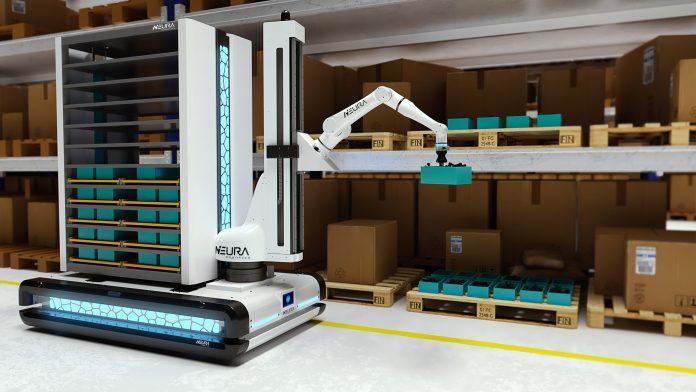Japan faces a labor shortage impact in 2024 as new overtime regulations for truck drivers come into force. This is being called the ‘2024 problem’ – its potential disruptions need technological help. The world´s number one country for manufacturing robots is developing automation strategies that will not only target logistical issues but also a wide range of industry challenges the new working time legislation will cause.
“The government´s overtime cap is an important step to improve working conditions for employees,” says Takayuki Ito, Vice President of the International Federation of Robotics. “Industrial and service robots deliver great solutions to automate. Robots relieve workers of dirty, dull and dangerous work and help to close productivity gaps.”
Robots load and unload cargo
In Japan, the average annual working hours for a heavy truck driver were 2,568, which is 444 hours longer than the national average for all jobs – labor ministry data from 2022 reveal. Placing cargo in and out of trucks and warehouses is one of the most time- consuming tasks of truck drivers. Mobile robot solutions in transportation and logistics can help. To free up truck drivers from loading and unloading cargo saves them up to 25% of working time during a day´s shift. Robots also help reduce errors in order fulfillment by automating repetitive tasks such as picking and packing.
Speed up warehousing
Warehouse robots in use today range from compact autonomous mobile models to large-scale automated storage and retrieval systems. Their use reduces the amount of time required to move goods and they can handle heavy loads and dangerous materials without putting human workers at risk.
Professional service robots are booming
The benefits of robots for transportation and logistics are documented by latest statistics: on a global scale, more professional service robots were built for the transportation of goods or cargo than for any other function. Sales grew by 44% with more than 86,000 units sold in 2022 worldwide, IFR reports.
Workplaces of the future
“Regulations of overtime work and the demographic change will require the adoption of automation technology in many branches of the Japanese economy,” says Takayuki Ito. “The challenges of the trucking industry are good examples to show how robotics and automation deliver adequate solutions for our workplaces of the future.”
iREX 2023 in Tokyo (November 29 – December 02)
The International Robot Exhibition (iREX) in Tokyo is highly regarded both in Japan and abroad as one of the largest exhibitions of it’s kind in the world:
- iREX homepage: https://irex.nikkan.co.jp/?
lang=en - iREX online webinars: https://irex.nikkan.co.jp/
webinar?venue=3
Downloads
Please find photos and graphics for download at: https://ifr.org/ifr-press-
Video
FACTS about Robots – the Global Automation Race in Numbers: https://www.youtube.
About IFR
The International Federation of Robotics is the voice of the global robotics industry. IFR represents national robot associations, academia, and manufacturers of industrial and service robots from over twenty countries: www.ifr.org
The IFR Statistical Department provides data for two annual robotics studies:
World Robotics – Industrial: This unique report provides global statistics on industrial robots in standardized tables and enables national comparisons to be made. It presents statistical data for around 40 countries broken down into areas of application, customer industries, types of robots and other technical and economic aspects. Production, export and import data is listed for selected countries. It also offers robot density, i.e. the number of robots per 10,000 employees, as a measure for the degree of automation.
World Robotics – Service: This unique report describes marketable products, tasks, challenges and new developments by service robots application. The report includes the results of the annual IFR service robot survey on global sales of professional and consumer service robots and an industry structure analysis including a full list of all service robot producers known to the IFR. The study is jointly prepared with the robotics experts of Fraunhofer IPA, Stuttgart.
Follow IFR on LinkedIn, Twitter/X and YouTube













































